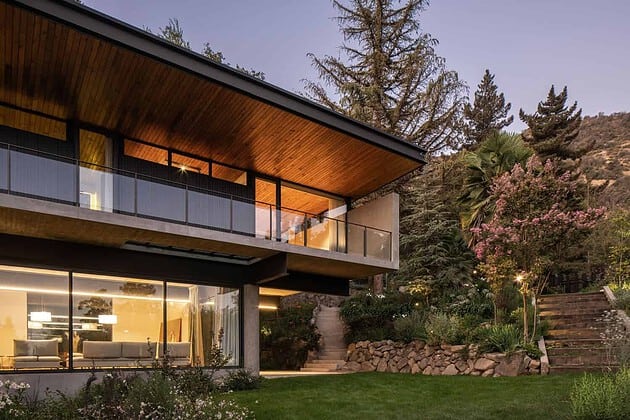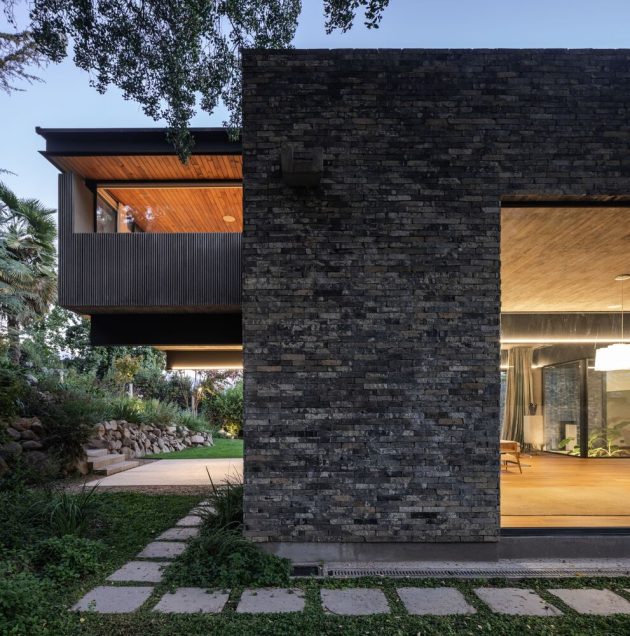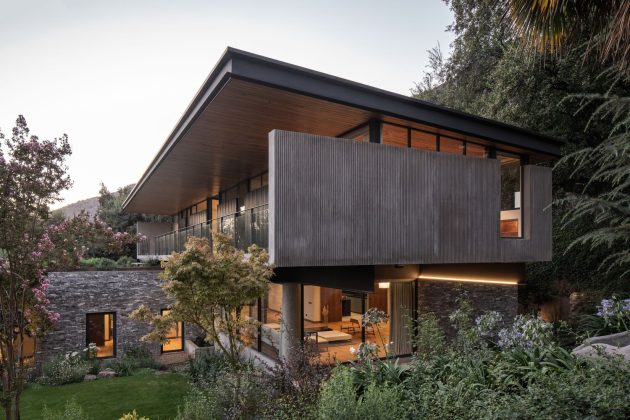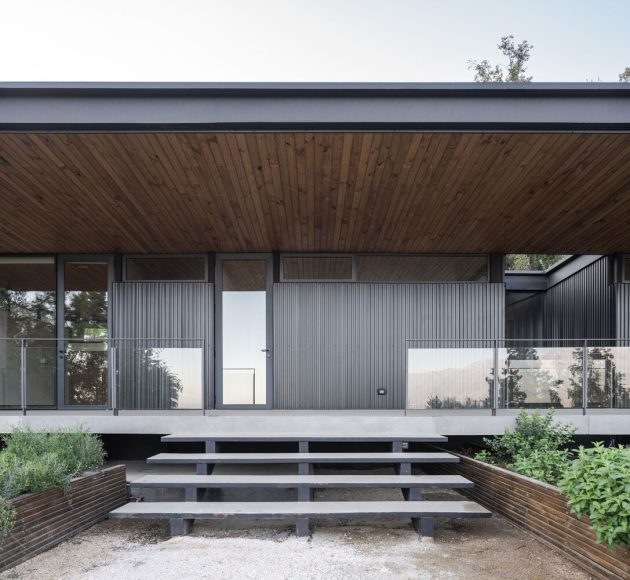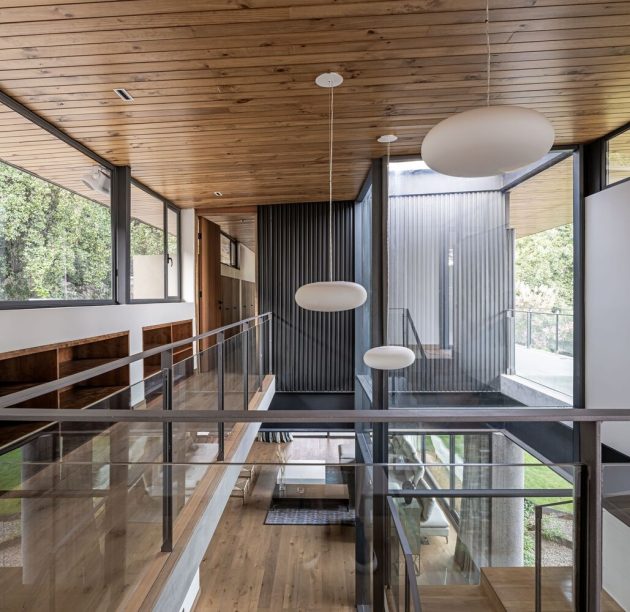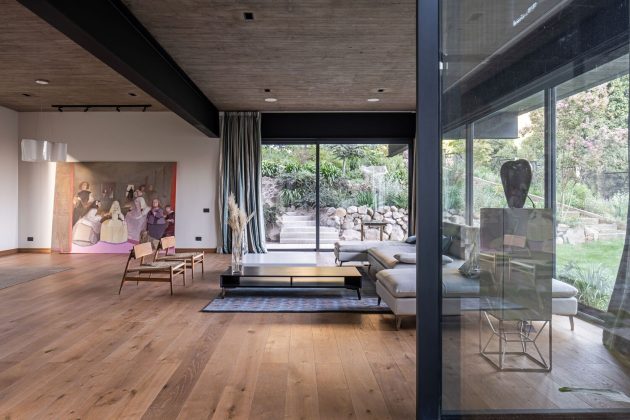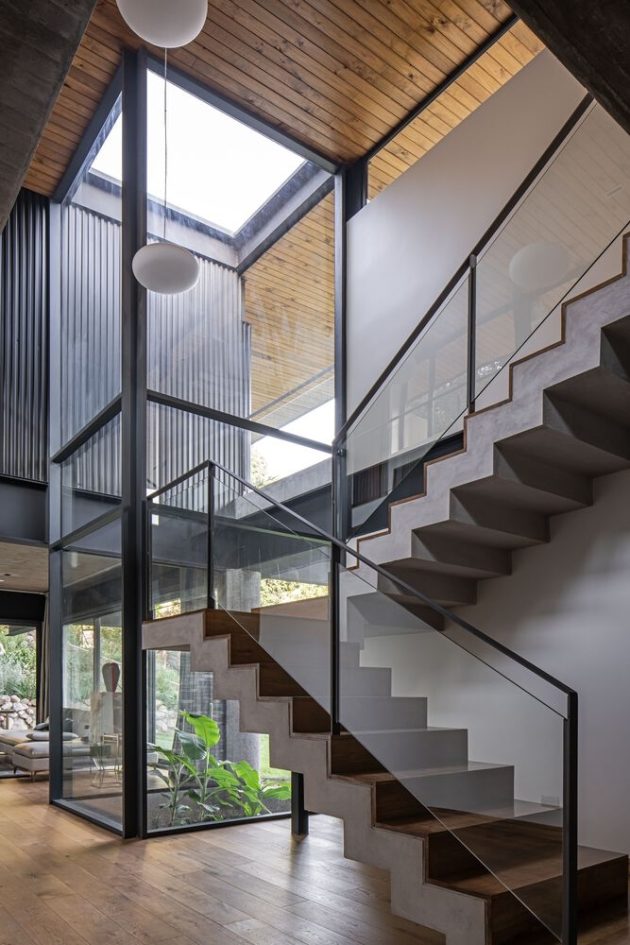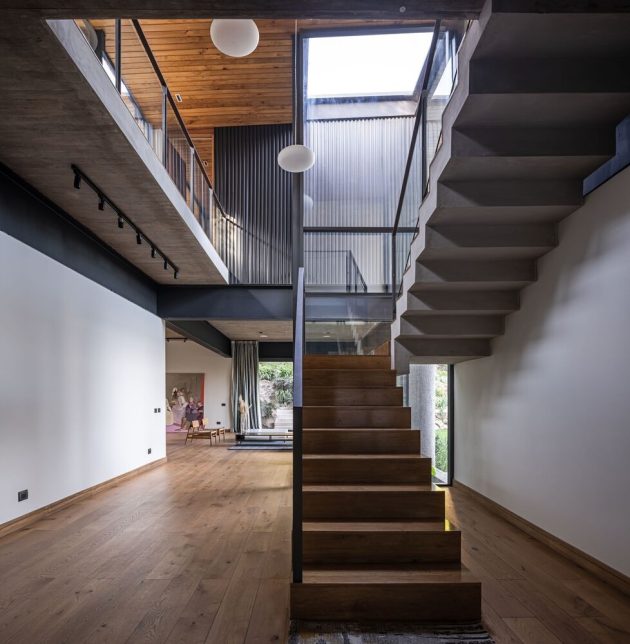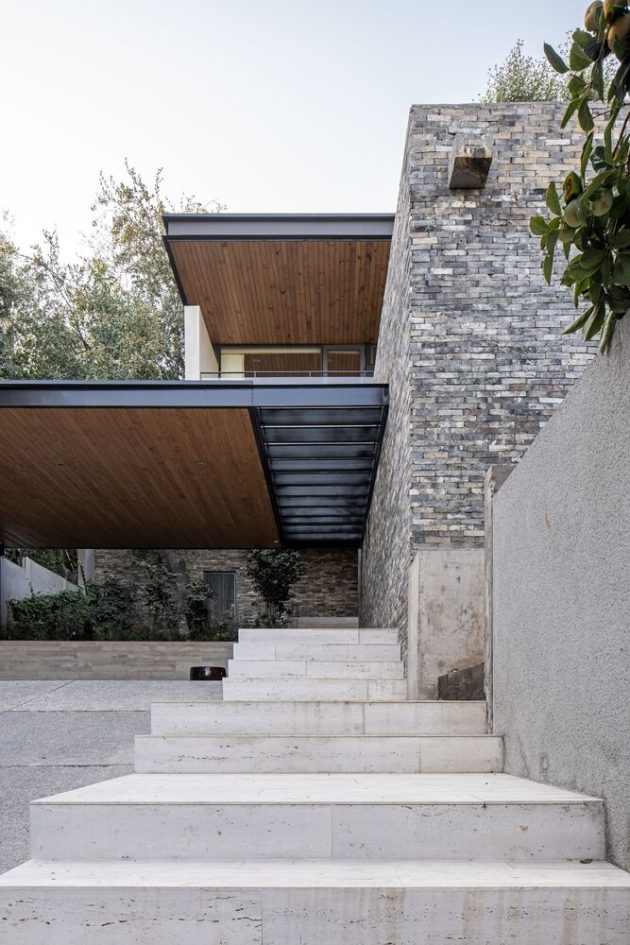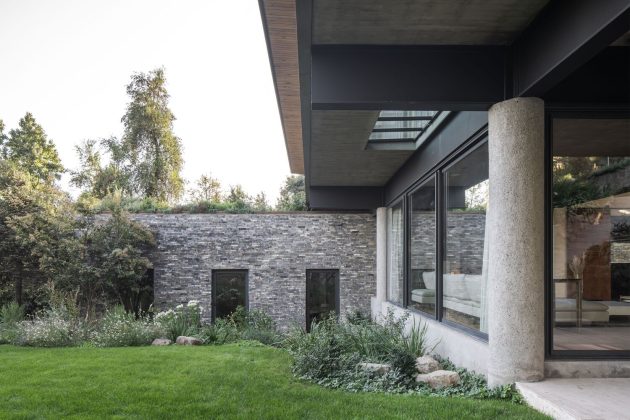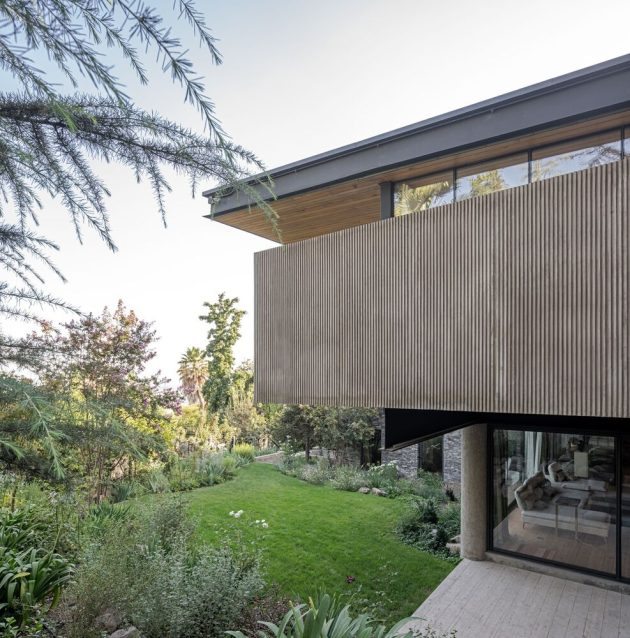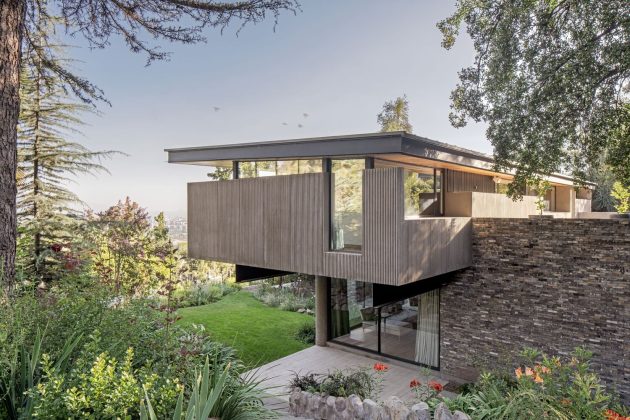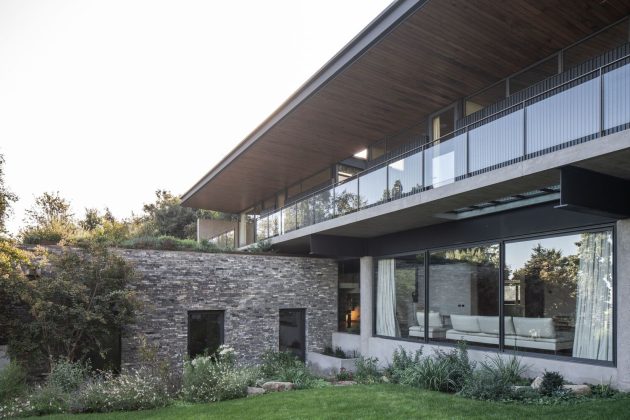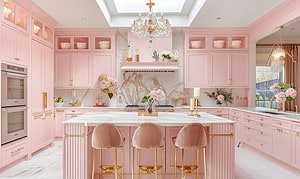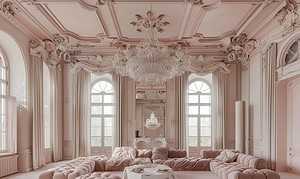Project: La Cumbre House
Architects: LKDM Arquitectos
Location: Vitacura, Chile
Area: 3,659 sf
Photographs by: Nicolás Saieh
La Cumbre House by LKDM Arquitectos
The La Cumbre House in Vitacura, Chile, creatively combines sustainability with modern design. Overlooking the city, the design aimed to maximize views of the Andes mountain range and Cerro Manquehue. While retaining parts of the original house, recycled materials were used to reduce waste and the carbon footprint. Passive cooling strategies, like nocturnal ventilation and evaporative cooling through vegetation, maintain comfortable temperatures in the summer. Intelligent lighting systems, connected to a photovoltaic system, ensure sustainable energy use. The landscape, a mix of existing and native plants, contributes to environmental conservation. Overall, the La Cumbre House is a testament to eco-conscious architecture.

The project is located in Santa Maria de Manquehue, commissioned by a couple who acquired a plot of land with a large garden and a colonial-style house from the 1980s that did not take advantage of its surroundings.
The clients’ intention was to develop a new house above the existing one, as the original one did not take advantage of the panoramic views of the city and closed off interesting points of its landscape environment, such as the large surrounding garden, the Andes mountain range to the east, and the summit of Cerro Manquehue to the north. This same closing condition was detrimental to the interior light of the rooms, which were shady, cold, and with moisture already ingrained in the walls. This, combined with the highly vegetated location, poorly oriented windows, and the shade cast by the mountain, aggravated this condition, so the new house had to solve these problems and be efficient in terms of energy consumption.
The commission was based on the idea of creating a new house that completely opened its views to the immediate surroundings (the gardens and the hill) as well as the distant (the city), but at the same time, part of the pre-existing house was planned to be recycled to avoid complete demolition and thus reduce the carbon footprint of the new one; its foundations and walls of the first floor (1/3 of them) were reused, but now covered with external insulation and clad in recycled stones to avoid future maintenance of its facades.
In turn, a large part of its components, such as double-glazed windows, doors, some bathroom fixtures, faucets, and kitchen furniture, were distributed for various uses through donations to improve other homes, as most of them were in excellent condition.
To achieve energy efficiency, the form factor and space of the rooms had to be tailored to capture natural light and subtly appropriate the views of the city to avoid disrupting the environment. Overhangs facing south were arranged to open to the views with perforations in the roof to allow the passage of northern light and the view of Cerro Manquehue.
The interior space was designed to generate a connection between the floors and thus allow radiation to enter in winter through the second floor to the first level, where the mass of the first-floor walls (insulated from the outside) was used to accumulate solar gains and generate a balance of temperatures inside following the principles of passive solar design. This same continuous insulation avoids thermal bridges in the coldest areas and, with this, eliminates the condensation that generated great humidity inside the previous house.
A combination of window opening types was used according to the use of the rooms; casement or projecting windows in bedroom areas, as they seal better and have fewer infiltrations, and sliding windows with greater infiltration in common spaces such as the living/dining room to open and connect these rooms to the large pre-existing garden.
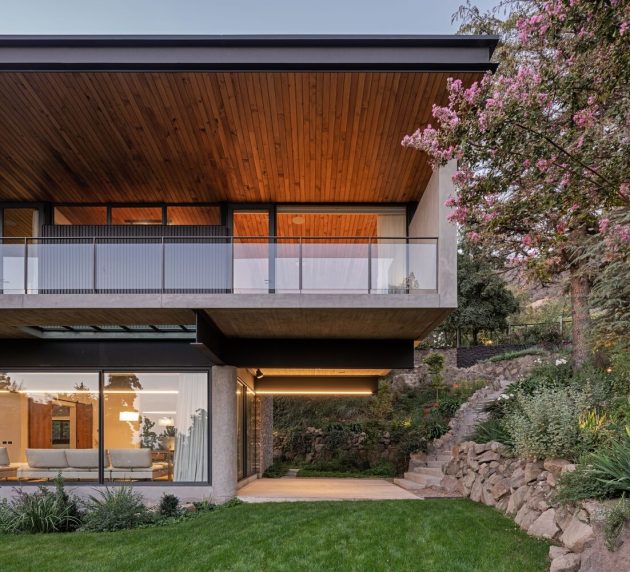
In the summer months, with the strategy on the north facade of overhangs and sills, the direct entry of radiation to the interior was controlled, allowing the thermal mass of the walls to absorb the heat of the air in the rooms and release it through nocturnal ventilation strategies to cool them.
Passive cooling strategies were complemented by the roof, considering continuous insulation with air chambers and two types of ventilation; on the one hand, convective, given the shape of the roof that rises to the south, allowing on this same facade to alternate high windows to leave the exhaust air outlet free. The second way of ventilating was crossed between vegetated patios in the center and north, providing evaporative cooling through shade and evapotranspiration generated naturally by the plants and trees located in these areas.
The intelligent and efficient lighting systems proposed in the house were connected to a photovoltaic system located in a strategic area of the north roof, which receives the highest annual radiation, to provide continuous electricity without depending on fossil energy generators.
Although the landscaping was existing and the owners asked to preserve it, it was complemented and restored mainly with naturalized and endemic species of the region, which have low water consumption to optimize this resource.
-LKDM Arquitectos

